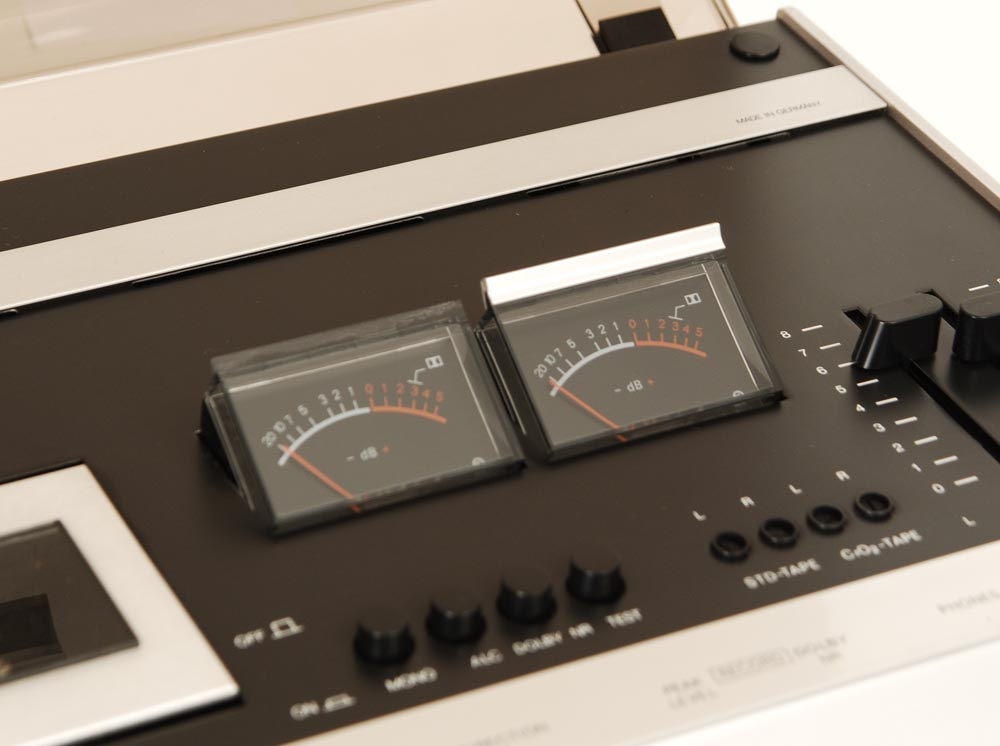

Both sounded very good, with the USB signal coming in at unity gain, which is as hot as you can go without clipping or other issues. I recorded the 202MKVII’s output using both the analog out and the USB port. Everything else sounded better on the 202MKVII. When I say off the street, I mean I literally picked it up off the street after someone ditched it.

Indeed, the tapes most affected by warble displayed less of it on my off-the-street Akai deck than on the 202MKVII. It does suffer, however, an oddity that I remember from back in the day: Pricier decks, and TASCAM’s in particular, handle iffy cassettes poorly. I threw a number of cassettes at the 202MKVII, which handled most of them just fine. Still, I’d call the 202MKVII’s sound significantly better than average. The sonic quality was very good, although to be honest, I wasn’t as blown away as I was by some of the very last cassette decks that came to market in the 1990s. I was also quite happy with the noise reduction, which indeed seemed to function like Dolby B, reducing hiss without significantly impacting the overall frequency response.
DUAL TAPEDECK PC
While the 202MKVII might induce some sticker shock, it is definitely a huge step up from Ion Audio’s Cassette 2 PC in terms of sound, features, and feel, and that goes for every other USB cassette deck I’ve looked at as well. The 202 has always kept it simple to reduce the complexity of the transport mechanism, limit failure points, and increase reliability. There’s no automatic reverse, as was found on many consumer decks. Off to the side are three two-position switches: Play Mode (Normal or Special, for monitoring the deck that’s not using the main outputs), timer (Off/Record/Play), and noise reduction (On/Off). Up top there’s the usual LCD readout with buttons for counter reset, return to zero (one for each well), dimming the display (several levels), repeat, parallel record (record to both decks at once), and dub start (copy from one well to the other). The 202MKVII’s front panel has all the bells and whistles you’d expect from a top-notch cassette deck, though it omits some that might affect playback quality, such as automatic rewind. There’s a microphone input with a rotary gain control, and a headphone jack whose output is controlled with the same type of control. Aside from the two dampened transport doors with their eject buttons, each deck has stop, play, record, pause-record, record-mute, fast-forward, and rewind buttons.

With nothing radical to see on the inside, I proceeded to replace the cover and peruse the front panel, which is decidedly more impressive.
DUAL TAPEDECK MANUAL
Both wells are belt driven, and the main logic board is labeled TEAC. Two-head mechanisms mean there is no monitoring of what’s being recorded, but that’s never been a feature of the 202. corvallis free stuff - craigslist newest 1 - 120 of 122 Aiwa WX200 Dual Cassette Tape Deck 1/8 Mountain Bike Manual Trainer 1/8. I, of course, opened the enclosure to check, and what I saw was neither scary (i.e., hugely cheap) or particularly impressive. TASCAM assures me the components used in the 202MKVII’s are new and manufactured to the company’s specifications.


 0 kommentar(er)
0 kommentar(er)
